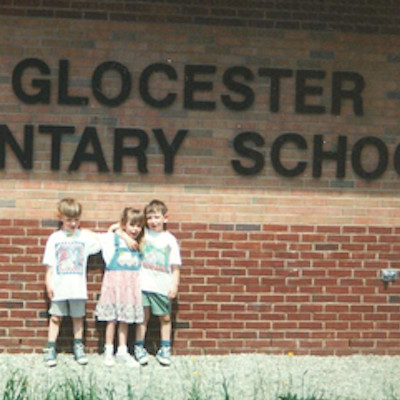Exposing the Big Lie of the US Economy
Monday, December 30, 2013
It seems these days that every politician ̶ national, state and local ̶ says his or her main goal is “to create jobs." After five years of the Obama regime, there are 90 million Americans unemployed, including those who have dropped out of the labor force; nearly 50 million people on food stamps; six and a half million people collecting Social Security Disability payments; almost half of all taxpayers pay no income tax; and the unemployment rate still hovers around 7 percent.
In Rhode Island
Rhode Island has the worst unemployment rate in New England. Politicians, particularly “progressive Democrats” and labor union leaders, tell us that what is needed to create jobs is stimulating consumer spending. For example, we are told that government spending on food stamps stimulates the economy.
GET THE LATEST BREAKING NEWS HERE -- SIGN UP FOR GOLOCAL FREE DAILY EBLASTIn his recent, lengthy and rather esoteric book, The Great Deformation, former budget director in the Reagan administration, David A. Stockman, writes that “monetary exchange rates have been chronically and heavily manipulated by governments. This is especially the case with respect to the mercantilist nations of Asia in pursuit of an ‘export your way to prosperity’ economic growth model.” He goes on to explain that the Treasury obligations stored in the vaults of their central banks are “Like any other vendor loan, they are designed to enable American customers to collectively purchase foreign goods and services far in excess of their actual earnings on current production.” Stockman argues that the last fiscally responsible president was Dwight Eisenhower and, except for the interlude of Fed chairman Paul Volcker’s harsh measures to tame the double-digit inflation of the Jimmy Carter years, our nation’s monetary policy has been a disaster.
Fiction Rules
We have been told a fiction since the day we were born. Namely, that we are all created equal and born free into a nation where life, liberty and the pursuit of happiness are our rights. Nothing could be further from the truth. The truth is that we are born into bondage, the bondage of a monetary system created for the express purpose of providing the state with maximum control over the individual. Our financial system is based on debt willingly acquired by a populace addicted to immediate gratification and the fiction of never-ending growth.
A fiat-based monetary system is one where the government prints as much currency as it wants. There is nothing supporting the currency except the government’s promise to pay the amount stated on the face of the bill. That’s why “Federal Reserve Note” is printed on every bill.
Our brand of fiat money uses debt as its creation mechanism. Money is created in two ways:
1. You and I borrow from a bank and money is created because the bank can loan more than it has on deposit.
2. The U.S. Treasury sells bonds, thereby borrowing from investors, including foreign central banks and primary dealers who are obligated to buy all the debt that the first two groups do not purchase. In both instances, “we the people” are on the hook for paying off the debt.
The dollar is regarded as the reserve currency because at the end of the Second World War, the United States physically held 80% of the entire world’s gold. Since our currency is no longer supported by physical gold, our future taxes are pledged for loans from foreign governments, private investors and, increasingly, our own central bank, thereby making our labor the collateral.
“Why Should You Care?”
That is a question we often hear, followed by, “So what if we have a lot of debt as a nation?” The answer is that a debt-based monetary system requires never-ending growth. Businesses borrow money at one rate and invest it ̶ put it to work - hopefully at a higher rate of return. If the rate of borrowing and/or growth is out of balance for any length of time, the economy will have a problem.
Under the Obama administration, the federal government has been spending about $1.7 trillion more than it takes in every year. In addition, the Federal Reserve Bank has engaged in something it calls “quantitative easing” (which it has no authority to do), which means it buys $84 billion a month in Treasury debt, thereby increasing the money supply by another $1 trillion.
Simply put, the Fed creates the money that the primary dealer banks and foreign central banks use to buy the Treasuries it needs to sell in order to fund our government's profligate spending. Debt created to purchase debt used to incur more debt is the system underpinning everything: the US government, the US economy, the world economy and all of the world's financial markets. You may find it hard to believe but, with minor variations around the globe, this is it.
There will reach a point fairly soon where the cost of borrowing for the nation and for individuals will skyrocket. When interest rates increase or, more accurately, the value of the dollar collapses, servicing our nation’s debt (paying the interest) will become impossible. Next year, the interest on our national debt will approach half a trillion dollars! That is more than 20% of total federal tax receipts.
For those of you inclined to be risk-takers who want to invest in interest-sensitive stocks and high dividend payers, remember the old saying, “No one rings a bell at the top."
For everyone else, diversify your investments into hard, non-dollar denominated assets: gold, agriculture, timber and, in some cases, rental property. A case can be made for holding a couple of bags of “junk silver,” i.e., coins with a high silver content. Hard assets maintain, and often increase, in value during periods of financial and economic crises.
Transforming America’s Future
President Obama and his wife have made it clear in their writings, interviews and speeches that the goal of his presidency is to “transform America” - into what is never stated. Many observers believe that Obama wants the United States to mirror the socialist republics of Europe - most of which are failing precisely because they have followed the policies in which the president believes.
In a recent speech, Obama decried “the growing gap between the rich and the poor." In his book, The Real Crash; America’s Coming Bankruptcy," Peter D. Schiff points out that: “If Obama confiscated the wealth - not income, but wealth - of the 50 wealthiest people in America, he could use that $700 billion to pay down about 5% of the national debt.”
There is little chance that his administration will do anything to keep the economy from collapsing. Barak and Michelle Obama are acolytes of the late community organizer Saul Alinsky, author of “Rules for Radicals." One of Alinsky’s rules is “maintain a constant pressure on the opposition," an opposition that he defined as the “Haves," or the upper class, which has the money, power and desire to maintain the status quo.
Alinsky, along with social activists Richard Cloven and wife Francis Fox Pliven, believe that to “transform America” you first have to collapse the existing economic system. This system is going to collapse. It is a question of when, not if, and whether it plays out quickly or slowly.
What follows is anyone’s guess.
David F. Brochu is the president and CEO of Kleossum advisers, an independent advisory firm for individuals and group retirement plans located in Conway, NH and Providence, RI. www.KLEOSSUM.com.
Richard J. August retired after a 45-year career spent mostly with financially embarrassed companies as a consultant or bank loan workout officer. Portions of this article originally appeared in Mr. Brochu’s bi-weekly column, Investments for the Rest of Us, in The Conway Daily Sun and are reprinted with permission of the publisher.
Related Slideshow: Rhode Island’s Most Unemployed Cities and Towns
Below are the unemployment rates for Rhode Island's 39 cities and towns from August 2013.
The statewide average for the month was 9.1% -- the third highest rate in the country.
Related Articles
- NEW: Rhode Island’s Unemployment Rate Drops Again
- NEW: Rhode Island Unemployment Rate Up For May 2013
- NEW: Rhode Island Unemployment Remained at 8.9 Percent for June
- NEW: Rhode Island Unemployment Climbed to 9.1 Percent for August
- DLT Director: RI’s Unemployment Rate Won’t “Turn Around Overnight”
- State Report: Chafee’s Budget, Unemployment Rate & Gay Marriage Vote
- NEW: RI Unemployment Rate Down Slightly in November
- NEW: RI DLT Reports Lowest Unemployment Rate Since 2008
- NEW: RI Unemployment Numbers Dropped to 8.8 Percent in April
- NEW: Unemployment Remains at 10.4%
- NEW: Chafee Announces Disaster Unemployment Assistance Sessions
- RI State Report: Unemployment, Gay Marriage & Fox’s Economic Plan
- NEW: Unemployment rate falls to 10.2 percent
- NEW: RI Unemployment Rate Drops To 9.4%
- NEW: Reed, Whitehouse Seek to Preserve Unemployment Insurance
- Unemployment Above 25% for Rhode Island Youth
- RI 1 of 5 States that Didn’t Improve Unemployment Rate in November
- RI State Report: EDC Nominees, Unemployment & An E-Cigarette Ban
- NEW: Rhode Island Unemployment Rate Increases
- Report: RI Unemployment to Remain Above 9% Until at Least 2014













